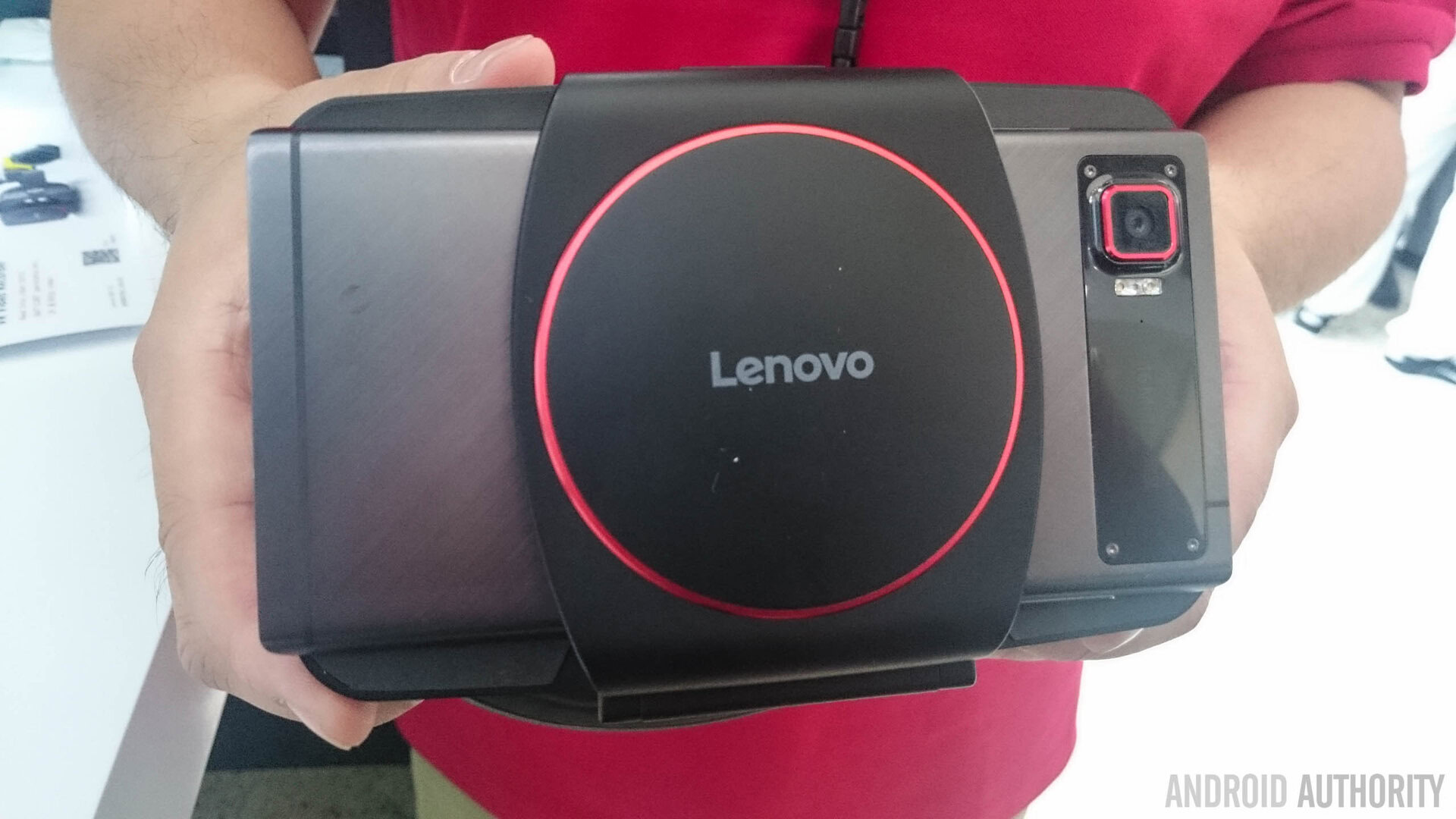Affiliate links on Android Authority may earn us a commission. Learn more.
Lenovo TechWorld 2015 - the highlights

Today, Lenovo held its TechWorld event in Beijing, China and alongside announcements of new consumer products, the company also showcased some concept devices that show the company’s future products may also be truly spectacular. Let’s take a look at some of the highlights of TechWorld 2015:
Laptops & Tablets
We’ll kick things off with Lenovo’s new tablets and laptops range:
ThinkPad 10 tablet
The updated 2nd-generation ThinkPad 10 tablet runs full Windows 10 and is Lenovo’s first product to run on Microsoft’s newest operating system. The ThinkPad 10 combines a quad-core Intel Atom processor with 64GB or 128GB internal storage and 2GB or 4GB RAM along with a 10.1 inch WUXGA display, which sports 1900×1200 pixels resolution and Corning Gorilla Glass 3 protection.
The ThinkPad 10 also has a 5MP camera with LED flash, 1.2MP front camera, non-removable 32Wh battery that lasts up to 10 hours and is 9.1mm thick. It also comes with a fingerprint scanner, ThinkPad Pen Pro with Cantonese writing support – the first digital stylus to support this complex language – dTPM encryption and a smart card reader. The ThinkPad 10 will cost $549 before taxes and subsidies and will be available once Windows 10 launches later this summer.
Lenovo Z41 and Z51 laptops / IdeaPad 100 notebook
From a Windows tablet to two laptops and a notebook; Lenovo introduced the Z41 and Z51 laptops and the IdeaPad 100 notebook.
First up are the Z41 and Z51 laptops, which feature 14 inch and 15 inch displays respectively and are focused on multimedia consumption. These laptops start at $499 and run Windows 8.1 until Windows 10 launches later this year.
The specs vary by region and the price point you choose but the available options include the latest Intel Core i7 processor, a full HD display with integrated Intel or AMD graphics cards, 16GB RAM, 1TB HDD or SSD, an array of ports and 4 hours battery life.
The IdeaPad 100 is designed to provide competition for the notebook market and provides a full Windows experience at an affordable price point. The notebook has a start price of $249 and comes with a 1366×768 pixels resolution display with integrated Intel graphics and an Intel processor.
Like Lenovo’s laptops, the customisation options vary by region and price point but max out at an Intel BayTrail-M N3540 processor, 8GB DDR3 RAM and either a 500GB hard drive or 128GB solid state drive. These notebooks are again quoted at offering up to 4 hours battery life from a single charge.
The Concepts
From the consumer devices to the concept and cool devices that showcase exactly what Lenovo can do:
Lenovo Magic View dual-screen smartwatch
The Lenovo Magic View is a concept smartwatch designed to solve one of the major problems with current smartwatches; the super small display. The Magic View looks similar to the Moto 360 but offers a Virtual Interactive Display (VID) between the watch face and the wrist strap, that allows you to view images up to 20 times the size of the standard watch screen.
The VID also has benefits for privacy concerns as it can be used to view information that you would otherwise not like publicly displayed on your wrist. As an example, the VID could be used for bank balance updates, which you would not necessarily want displayed for all to see.
Lenovo Smart Cast smartphone
Lenovo wasn’t done with the concepts there though as the company decided to show us what the future for its smartphones could hold.The Smart Cast smartphone is a truly unique device as it features the world’s first laser projector on a smartphone as well as the world’s smallest pico projector. In use, the smartphone allows you to project your content onto a large wall or project a keyboard or other controls onto any surface.
As an example, famed Chinese pianist Lang Lang took to the stage during the keynote to demo the projector and it showed that the technology has several real-world applications. From projecting content to being used as a teaching aid, the projector could be open up new realms for technology that were previously only concepts.
Other highlights
From the concepts to other consumer devices that took our eye:
Lenovo Cast
The Lenovo Cast is Lenovo’s answer to the Google Chromecast but trumps Google’s offering in a few key ways. While the Chromecast is limited to support for just Cast technology, the Lenovo Cast also supports DLNA and Miracast which essentially means it can convert any HDMI-enabled display into a fully-fledged multimedia device.
[related_videos align=”center” type=”custom” videos=”591712,575096,526866,591853″]
The other key feature compared to Chromecast is support for dual-band Wi-Fi; one of the biggest issues with the Chromecast is that it only supports the 2.4GHz channel so if you have a dual-band router, you’ll often need to split the channels for your Chromecast to consistently work. The Lenovo Cast solves this and also comes with a mount to attach the puck-shaped device to the back of your TV.
Lenovo VR Googles

From media streaming to an entirely new world of virtual reality and Lenovo has entered the VR race with its new Lenovo VR Goggles. Designed just like the Gear VR, the goggles use your Lenovo smartphone as the display and come with a handheld remote control to navigate the on-screen menus.
So there you have it, our highlights from Lenovo’s TechWorld 2015. Our very own Darcy is in Beijing for Lenovo’s event and captured the photos in the gallery above but for now, which was your favourite device shown off at TechWorld 2015? Vote in our poll and let us know your views in the comments below